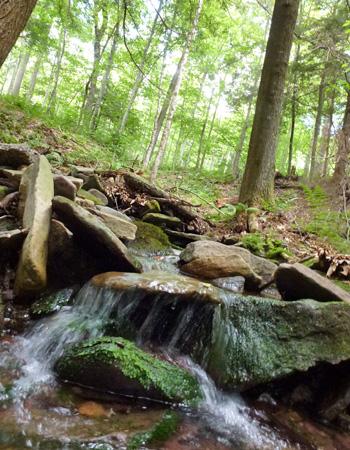Evaluating the Influence of Riparian Forest Structure on Stream Ecosystems across the Northern Forest

Forest and aquatic ecosystems are naturally linked. Disturbances, such as exotic pests and selective logging, can alter forest canopies and influence nutrient fluctuations, organic matter input and export, and large woody debris in adjacent streams. Complexity of the forest canopy, which is in part related to forest age, may also influence in-stream ecosystem function. NSRC researchers investigated the relationship between forest structure and measures of stream ecosystem function that include nutrient uptake and metabolism of photosynthetic, aquatic organisms.
Researchers measured metabolism and nutrient uptake of streams at 13 forest sites in June, August, and October. Six streams were measured in 2011 in the Adirondack Mountains of New York; seven additional sites were measured in 2012, with four in the White Mountains of New Hampshire at Hubbard Brook Experimental Forest and three located in Nash Creek watershed in northern New Hampshire. Locations spanned a gradient of forest structure and forest age (80-400 years old).
Researchers found stream ecosystem function was influenced by the age and structure of associated forests. They found greater light availability from canopy gaps in older forests was linked to greater stream metabolism and concentrations of algal chlorophyll. In contrast, nutrient uptake was not influenced by forest age and structure and appeared to be limited by some other factor besides light availability. Chronically low nutrient status of these streams combined with a history of acid deposition in the Northern Forest region may have temporarily stripped the capacity of the streams to store or take up nutrients even when light increases.
